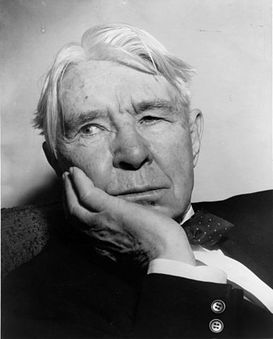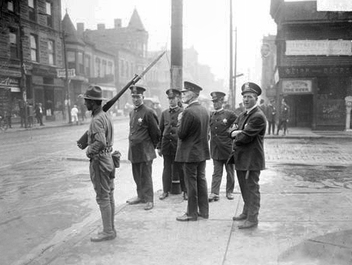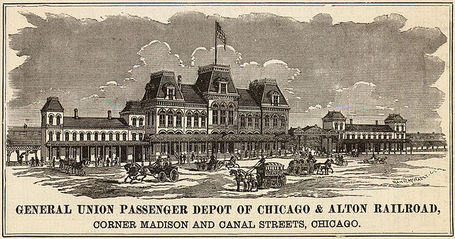 Illinois' Carl Sandburg (1878-1967)
Illinois' Carl Sandburg (1878-1967) “The so-called race riots in Chicago during the last week of July, 1919, started on a Sunday at a bathing beach. A colored boy swam across an imaginary segregation line. White boys threw rocks at him and knocked him off a raft. He was drowned. Colored people rushed to a policeman and asked for the arrest of the boys throwing stones. The policeman refused … more rocks were thrown, on both sides. The policeman held on to his refusal to make arrests. Fighting then began that spread to all borders of the Black Belt. The score at the end of 3 days was 20 negroes dead, 14 white men dead, and a number of houses burned. The riots furnished an excuse for every element of Gangland to go to it and test their prowess by the ancient ordeals of the jungle.”
Thus Carl Sandburg begins his eighty-odd page book The Chicago Race Riots, July, 1919 (Harcourt, Brace and Howe, 1919). While the first few pages deal with the riot itself, the bulk of the book traces the roots of race relations across America in the summer of 1919, centering on Chicago.
 Chicago 1919 Douglas Neighborhood: five police officers and a soldier
Chicago 1919 Douglas Neighborhood: five police officers and a soldier 1. The Black Belt population of 50,000 more than doubled in Chicago during the war (World War I that is) and no new houses or tenements were built.
2. The Black Belt connects directly with a city administration … and a mayor whose opponents failed to defeat him with the covert circulation of the epithet “nigger lover” … to such a community the doughboys came back from France.
3. The third factor was that union members black and white by the thousands … were shaking hands as “brothers” and could not be counted on for any share in the mob shouts and ravages.
 Chicago Train Station 1881-1925
Chicago Train Station 1881-1925 “Chicago is a receiving station that connects directly with every town or city where the people conduct a lynching. Every time a lynching takes place in a community down south you can depend of it that colored people from that community will arrive in Chicago inside of two weeks says the secretary … of the Chicago Urban League … on Wabash Ave.”
Let’s pause and pick up (at the train station) tomorrow with Part II of Carl Sandburg and American Exceptionalism.
William Abens, author
| | *Next: Tomorrow, Part II of the Abens special, American Exceptionalism and Carl Sandburg. Posted by Bryan W. Brickner |
 RSS Feed
RSS Feed
